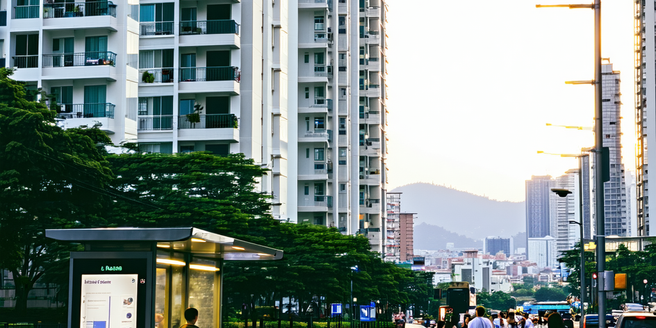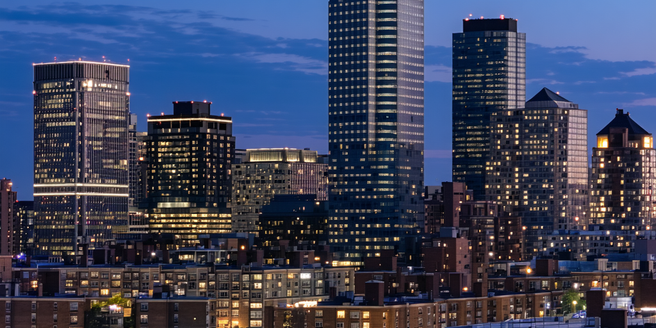Location Factors In Apartment Hunting

Proximity to Public Transportation
| Bus Stops | Subway Stations | Train Stations |
| 0.5 miles | 1 mile | 2 miles |
| 3 stops | 2 stops | 1 stop |
| Daily | Daily | Weekdays |
| 5 AM – 11 PM | 24 Hours | 6 AM – 10 PM |
| $2.50 | $3.00 | $3.50 |
Access to Quality Education
When searching for an apartment, access to quality education is a top priority for many families. The presence of reputable schools, both public and private, can significantly influence an area’s desirability. Proximity to educational institutions not only benefits families with school-age children but also enhances the community’s overall value. It is important to research the school district’s ratings, extracurricular offerings, and any specialized programs available. Living near a school zone can also positively impact property values. This includes universities and higher education facilities which attract students, faculty, and staff, further fostering a vibrant community. During your apartment hunt, prioritize areas that boast a strong educational infrastructure, ensuring a beneficial environment for all residents.
Crime Rates and Safety Concerns
Understanding crime rates and safety concerns is crucial when choosing an apartment location. Areas with lower crime rates offer peace of mind and a higher quality of life. It’s advisable to review local crime statistics and stay informed about recent incidents to gauge a neighborhood’s safety. Visiting the area at different times of the day can also provide valuable insight into its safety. Consider how well-lit streets are, the presence of active neighborhood watches, and the frequency of police patrols in the area. Safety is not just about crime rates but also encompasses the overall environment, including emergency response times and community engagement in safety initiatives. Prioritizing safe neighborhoods will ensure a secure living environment for you and your loved ones.
Availability of Local Amenities
The availability of local amenities greatly enhances convenience and lifestyle in any apartment location. Whether it’s grocery stores, shopping centers, eateries, or entertainment options, having easy access to daily necessities and leisure activities can significantly improve your living experience. It’s worth taking the time to explore the local area to see everything it has to offer. Local amenities should align with your lifestyle and personal preferences. Consider facilities such as gyms, libraries, healthcare services, and community centers. When evaluating a neighborhood, take into account factors like safety and accessibility as well. The presence of local businesses and services reduces travel time, fostering a more relaxed and fulfilling everyday life. Choose areas with diverse amenities that cater to your needs, ensuring comfort and enjoyment in your new home.
Neighborhood Noise Levels
Neighborhood noise levels play a significant role in apartment living satisfaction. High noise levels can disrupt your peace and affect your daily activities, including work-from-home setups and sleep quality. It’s vital to assess the typical noise patterns in the area during various times of the day and week. Taking a walk around the neighborhood at different times might help you gauge the noise firsthand. Consider the proximity to highways, airports, and industrial areas, all of which can contribute to heightened noise levels. Also, observe the neighborhood vibe—lively social hubs or quiet residential streets can differ vastly in noise levels. Choosing a location that matches your preferred noise tolerance will ensure a harmonious living environment.
Proximity to Work or School
Proximity to work or school is a fundamental factor in apartment hunting, impacting commute times and daily routines. A shorter commute translates to more leisure time and reduced travel stress, enhancing your quality of life. It’s important to factor in the safety and accessibility of these commuting paths as well. Ensure you explore neighborhood amenities that might further improve your living experience. Consider routes and transportation options available, including public transit, biking, and walking paths. Assess the flexibility and reliability of these commuting options during peak hours. Additionally, living closer to work or school can decrease transportation costs, contributing to financial savings. Prioritizing locations within a reasonable distance of your daily destinations will ensure a more balanced and enjoyable lifestyle.
Access to Parks and Recreational Areas
Access to parks and recreational areas significantly boosts the appeal of an apartment location by offering residents a space for relaxation, exercise, and social interactions. These spaces provide a breath of fresh air amidst the urban environment, making them a valuable asset. Moreover, the presence of well-maintained parks can also increase the property value over time. Proximity to green spaces allows for outdoor activities like jogging, picnics, and sports, contributing to a healthier and more active lifestyle. These areas also serve as community hubs, bringing people together for events and community gatherings. For families, parks offer playgrounds and safe play areas for children, enhancing family life quality. When apartment hunting, evaluate the availability and quality of nearby parks and recreational facilities to ensure they meet your lifestyle needs.
Local Economic Stability and Growth
Evaluating local economic stability and growth is vital when searching for an apartment. A robust economy often indicates job opportunities, business growth, and a healthier housing market, making the area more attractive to potential residents. It’s important to research local economic trends to make an informed decision. Look for signs of economic vitality, such as new businesses, rising employment rates, and infrastructure development. Economic stability also affects property values, ensuring a good investment and potential appreciation of property worth. Additionally, consider the presence of industries and sectors driving growth in the area, as these can sustain economic health over the long term. Choosing an economically strong location provides security and future opportunities.
Cultural and Community Aspects
Cultural and community aspects shape the character of a neighborhood, making them important considerations in apartment hunting. Vibrant cultural scenes and engaged communities create inviting environments that foster a sense of belonging and diversity. Exploring these neighborhoods can lead to unexpected and delightful discoveries that enhance your living experience. Look for areas with cultural events, art galleries, theaters, and community centers that offer cultural enrichment opportunities. Community features such as farmers’ markets, local festivals, and volunteer groups further enhance community cohesion. Engaging with these communal activities provides a fulfilling living experience, connecting you with fellow residents and enriching your social life. Prioritize locations with active cultural and community elements that align with your lifestyle.
Future Development Plans
Future development plans in an area can significantly influence its desirability and livability over time. Assessing plans for new infrastructure, residential projects, commercial spaces, and public amenities offers insights into potential positive changes or challenges a neighborhood might face. These developments can enhance property values and improve quality of life, but they might also lead to increased traffic or noise. Staying informed about zoning changes can also help you anticipate future shifts in the area’s dynamics. Engaging with local planning departments or community meetings can provide valuable information on upcoming projects. Consider how these developments align with your long-term living goals to ensure the area will continue to meet your needs in the future.
